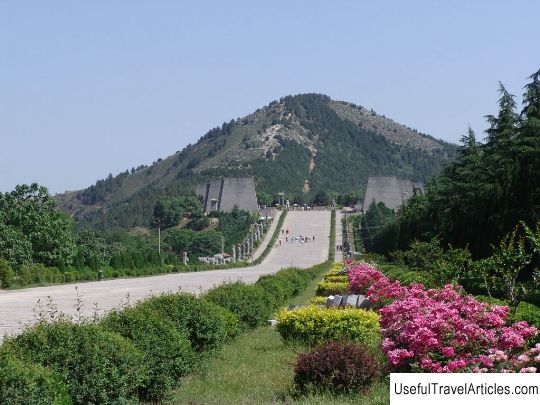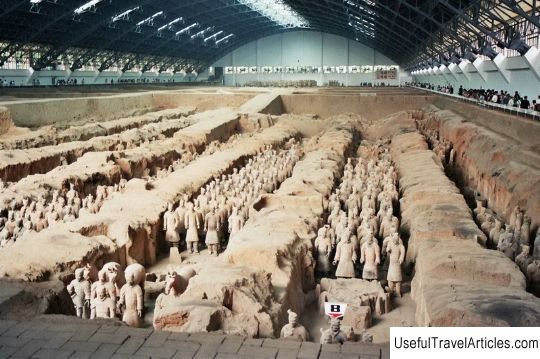Burial complex (mausoleum) of Emperor Qin Shihuang di (Terr in China, resort Xi'an
Rating: 7,9/10 (1243 votes)  Emperor Qin Shi Huang was one of the greatest emperors of China. He ascended the throne at the age of 13 and throughout his reign made China a single powerful state. At the time of his accession to the throne, he gave the order to build his tomb. They began to build it at a distance of 30 kilometers from the city of Xian, at the foot of Mount Lishan. The Emperor's Mausoleum is a palace surrounded by brick walls. The burial itself is located behind the inner wall - the room is 0.5 kilometers long and slightly less wide. Several tunnels lead to it. The area of the entire burial complex is 60 square kilometers. The emperor's crypt was filled with replicas of palaces, figures of officials, rare things and valuables, as well as countless treasures. On the floor of the crypt, a map of the world with oceans and rivers of mercury was recreated. To the east of the tomb, at a distance of 1.5 kilometers from it, terracotta warriors were buried. 8 thousand soldiers, as well as hundreds of horses, sculpted from clay, were created to protect the emperor after death. The weapons, harness and armament parts of the army were real. The figures were sculpted from real warriors so that after death their souls would move into sculptures and continue to serve the emperor. All the warriors are turned to the east, to where the kingdoms were located, which Qin Shi Huang defeated. The statues were created with amazing diligence and precision - it is impossible to find the same face anywhere. Among the terracotta warriors there are not only Chinese, but also Uighurs, Mongols, Tibetans, and also other nationalities. The sculpted statues of the master were fired in special furnaces at a temperature of one thousand degrees. After that they were painted in natural colors by the best Chinese artists. The only deviation from reality is the height of the warriors - 1.9 meters. The warriors of the emperor were certainly not so tall. The weight of one soldier is approximately 135 kilograms. To accommodate this army, a pit was dug in an area equal to modern football fields. After the death of the emperor, his officials, slaves, wives and concubines were buried with him. After that, 70 thousand workers were herded there, who equipped the crypt. The jade doors were closed, the entrance was walled up, and a hill was poured over the tomb and trees and bushes were planted there so that no one would know how to enter the tomb. For more than two thousand years, no one knew anything about this burial complex. However, in 1974, the peasant Yan Ji Wang discovered one of the statues of a Chinese warrior. He informed the archaeologists about this, and they have already found the entire burial. However, the tomb of the emperor has not yet been found.   We also recommend reading Lhasa Cathedral Mosque in China, Lhasa resort Topic: Burial complex (mausoleum) of Emperor Qin Shihuang di (Terr in China, resort Xi'an. |




